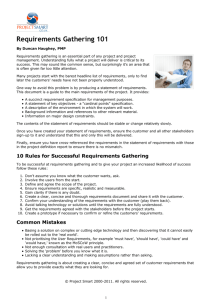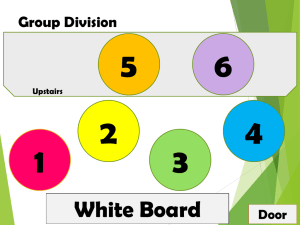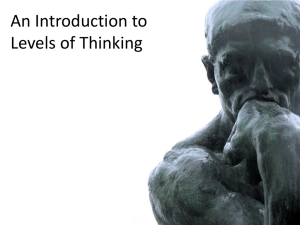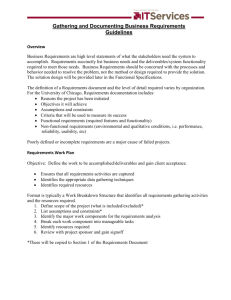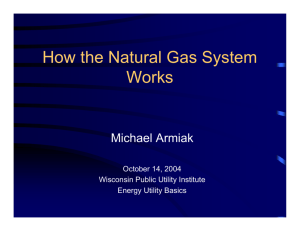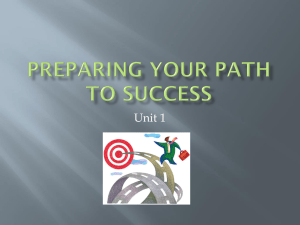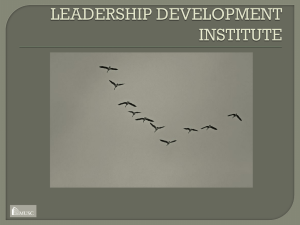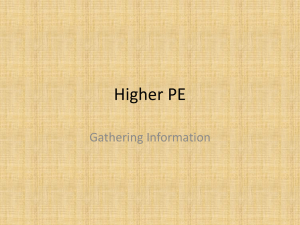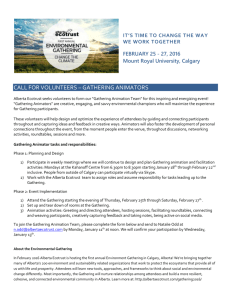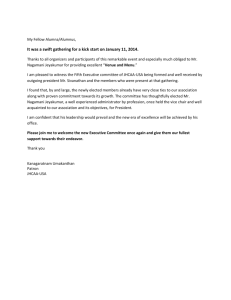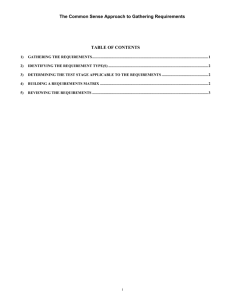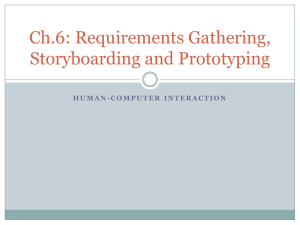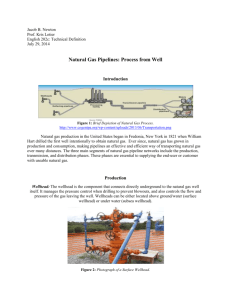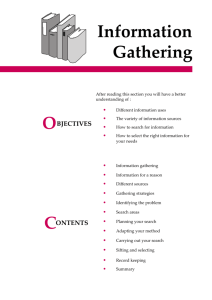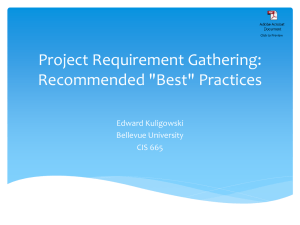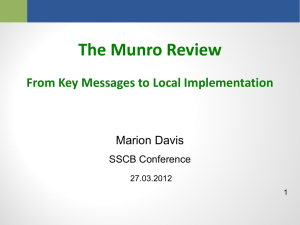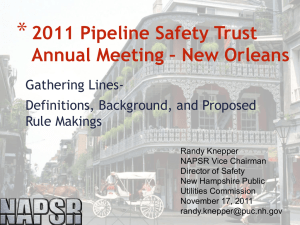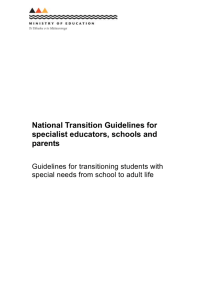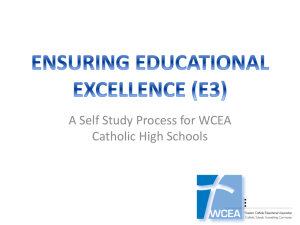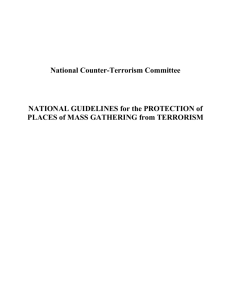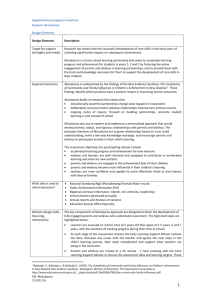Powerpoint 3.91MB
advertisement
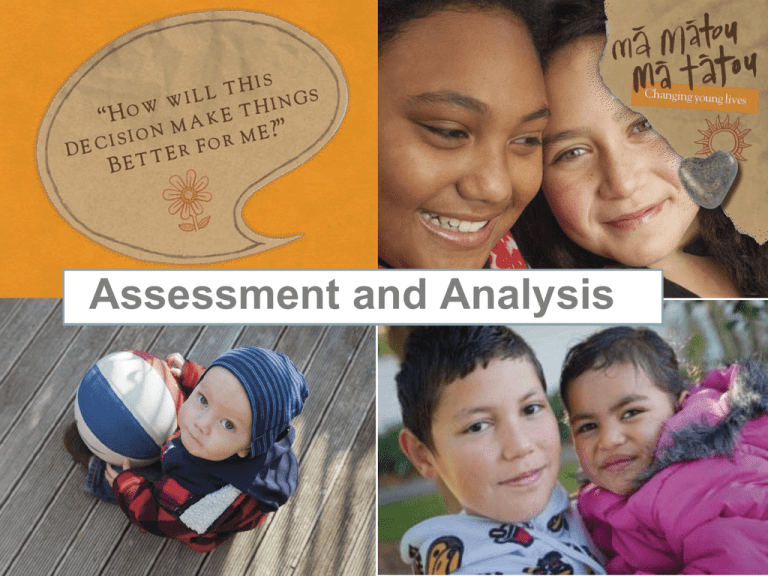
Assessment and Analysis Learning Objectives > gain a common understanding of assessment > discuss the process of assessment > locate analysis in the assessment process > gain a working knowledge of the elements of quality assessment > gain a working knowledge of how analysis assists effective decision making. How confident am I? Brainstorm What is assessment? When does it happen? What would I see when it is done well? Assessment > is a collaborative process of understanding the needs, issues, challenges and strengths for the child or young person and their family > seeks to identify possible solutions, determine what needs to be achieved and what progress and success might look like > is both the initial process of our work and an on-going process of noticing and monitoring change and progress > enables people to gain a fresh perspective or insight into their situation and offers hope. Practice Activity Assessment collaborative process of understanding the needs, issues, challenges and strengths for the child or young person and their family identify possible solutions, determine what needs to be achieved and what progress and success might look like both the initial process of our work and an on-going process of noticing and monitoring change and progress enables people to gain a fresh perspective or insight into their situation and offers hope When done well what does this look like for: the child or young person? their family and/or caregivers? other professionals? Quality assessment > requires a relationship with the child or young person and the important people in their lives – family/whānau, caregivers, other professionals > involves the systematic and purposeful gathering of information > the use of critical, analytical and reflective thinking to make sense of that information > requires the application of theory, knowledge and skill to the specific and unique circumstances of each child or young person Process of assessment Discover strengths and resources Preparation Gathering information Applying professional knowledge to understand or interpret the information Making professional judgements Making decisions Scale safety and progress justice and accountability focused Practice Activity How do you demonstrate the safety organised elements and practice principles in your assessment practice? Preparation Preparation “When assessments are undertaken without adequate preparation and without a clear sense of purpose and direction they are unlikely to produce good quality material that will help in planning to improve the lot of service users.” (Parker & Bradley; 2010, p.9) Use of the consult as a preparation tool Tools for preparation Practice Activity How will we enable a child or young person to tell their story? How will we engage with the notifier? How will we engage with victims? How will be engage with family and/or caregivers? How will we engage with other professionals/service providers? Why? What other tools are in your kete? Information Gathering Information gathering will vary according to the needs of the family we are working with. Salomen & Sturmfels, p4, 2011 Information gathering with a purpose > is important in developing a thorough assessment > is dynamic, incremental and on-going > is centred around the child or young person’s needs, parenting capacity, family and environmental factors > must consider the past history, present circumstances and future protective and risk factors > always starts where the child or young person and their family is at > must engage the child or young person > seeks information from family, whānau, and other professionals Discussion “Human relationships are complex and often value-laden. The values and preconceived notions a social worker brings to relationships with their clients can impact on the outcomes. If a person’s values allows them to make judgement that people are ‘bad for what they have done’ and incapable of change, this obstructs a respectful helping relationship before it has begun.” Salomen & Sturmfels, April 2011, p.5 Analysis Applying your professional knowledge to understand and interpret the information that was gathered. Your analysis A model of knowledge and skills as a lens for analysis Munro’s model: Munro, 2005 reproduced and adapted in Dalzell and Sawyer, 2008, p.15 Practice Activity What would the child or young person experience? What would other professionals experience? Analysis supports decision making Practice Activity • what assumptions did you make and what evidence was there to support them? • what is the inter-relationship between the risks, needs, strengths and protective factors? • what links are there between the recorded assessment, abuse findings, plans for intervention and case direction decisions? • what knowledge and skills did you use to inform your decision? Reflection
